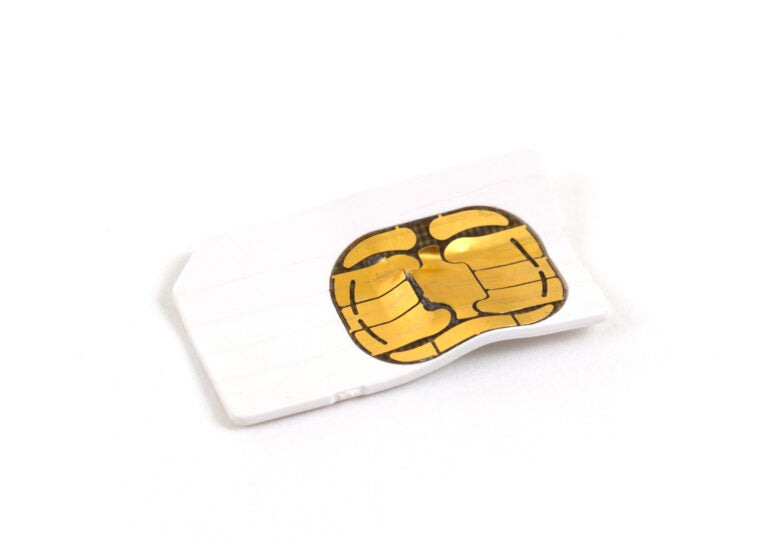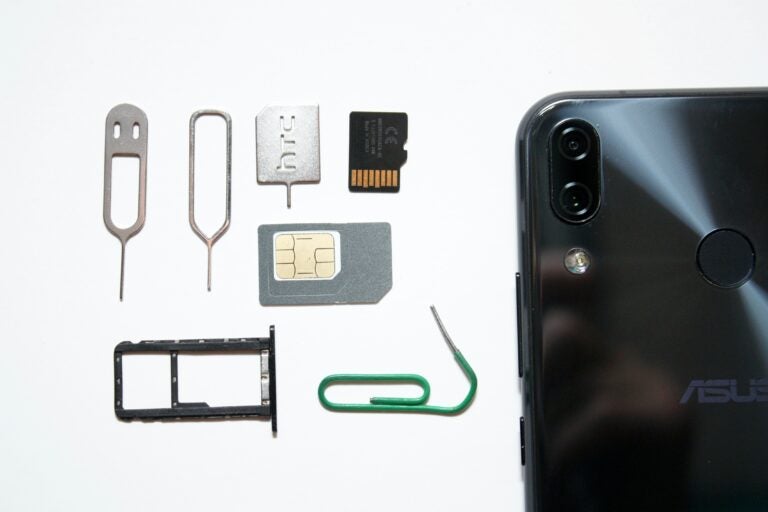Do SIM cards go bad? Key facts to know
Can SIM cards go bad? From physical damage to network changes, many factors can affect your SIM card's lifespan. Explore what causes SIM cards to malfunction, and how to prevent this from happening.
Do SIM cards go bad? Yes, they do. If you’re unable to place phone calls, send text messages, or access the internet using your mobile data, your SIM card may be to blame.
When your SIM card stops working, your phone has limited functionality and your connection to the world depends solely on WiFi. Scary thought — especially when abroad. Fret not, this article covers:
- How and why SIM cards go bad
- How to recognize a SIM gone bad
- How to prevent SIM cards from malfunctioning
- What to do when phone SIM cards go bad
First, let’s go over the lifespan of a SIM card.
How long do SIM cards typically last?
A well-maintained SIM card can last for roughly up to 7 years. But this isn’t always the case, with some SIM owners needing replacements within months due to manufacturing defects, which stop the SIM from working.
Beyond factory defects, can a SIM card go bad? SIM cards, much like food, can expire. If you haven’t activated your physical SIM card yet and it’s already not working, it might not be broken — you may have missed the activation window.
The expiry period varies by carrier. Some require activation within 30 days, while others allow up to a year or more. Be sure to check the carrier’s policy before purchasing.
Now, let’s look at more reasons why SIM cards can fail.
Causes of a SIM card going bad
Why do SIM cards go bad? Due to its size, your SIM card is fragile. Whether it’s being left on a scorching car dashboard in the summer or getting scratched after a drop on a tropical beach, the reasons your SIM card might stop working include:
- Physical damage: Scratching, bending, and applying too much pressure on your SIM card when handling it can damage its circuits.
- Water exposure: Whether it’s humidity, a splash of water, or dropping your phone in a puddle, liquid damage can lead to a malfunctioning SIM.
- Extreme temperatures: Leaving your phone in direct sunlight or inside a hot car can warp the card, while freezing temperatures may also cause it to lose functionality.
- Wear and tear: General wear and tear can impact your SIM card’s performance. Frequently swapping your SIM card between different mobile devices increases the risk of damage.
- Network changes: Your SIM card may become outdated due to changes in your carrier’s network (for example, switching from 4G to 5G).

SIM cards can easily break due to improper handling. Source: iStock
How to recognize a bad SIM card
The symptoms of a SIM that’s gone bad include:
- Not being able to receive text messages, make calls, or access cellular data
- Constant network searching and inability to join networks
- “No SIM” and “No Service” error messages
- Constant poor signal quality
Depending on how severe the SIM card damage is, your phone may not even detect the SIM card at all. When this happens, your device will display notifications or alerts.
Android phones notify you if a SIM card isn’t detected, prompting you to check its status.
To verify if your SIM is functioning properly, go to Mobile network type or Service state (Settings > About phone > Status). Unusual data or none at all may indicate a damaged SIM card.
On an iPhone, a “no SIM” alert will appear in the status bar if the SIM card malfunctions. To check manually, go to Settings > General > About.
If no information is shown next to Network or Carrier, this could suggest the SIM is not working correctly.
When your SIM card stops working, you cannot perform daily tasks like sending or receiving text messages, making calls, or connecting to mobile data. The only thing you’ll be able to do is make emergency calls.
In less extreme cases, you’re likely to experience unreliable network service and intermittent functionality. This translates into missing calls, receiving texts late, and not being able to get online.

When should you replace a SIM card?
When your SIM card becomes unreliable, it’s time to investigate. Remove it from its tray, clean it well with a dry, delicate cloth, and insert it back into your phone.
If that didn’t do anything, and the dust wasn’t the issue, it’s time to consider replacing your malfunctioning SIM card.
How to prevent SIM card damage
Here are some tips on how to properly handle your SIM card to extend its lifespan:
- Store it safely: When you’re not using your SIM card, pop it back into its original cardholder or stash it in a protective plastic pouch to keep it safe from damage.
- Keep it dry: If your phone takes a dip into the water, remove your SIM card immediately and dry it completely to avoid rust or moisture damage.
- Avoid overbearing heat: Don’t leave your phone baking in the sun or in particularly hot places like in the proximity of a stove or oven.
- Stay away from magnets: Magnets can potentially corrupt or erase the data stored on your SIM card.
- Handle with care: Be gentle when inserting or removing your SIM card to avoid bending or scratching it.
- Reduce wear and tear: Try not to remove and reinsert your SIM card too often. If you’re constantly switching between phones, it might be time to consider a virtual SIM card (eSIM) for a hassle-free, durable option.
An eSIM is a digital SIM card embedded directly into your phone.
There’s no physical chip to haul around and switch between devices whenever you travel. Unlike traditional SIM cards, eSIMs don’t require special care or careful handling as they are 100% virtual.
No more dropping your SIM tray on the airport floor when switching to a local network, connectivity issues due to wear and tear, or unavailable cellular networks because of a damaged SIM card abroad. eSIMs are a more convenient, plastic-free alternative to physical SIM cards.
Pro tip: Read this article to learn how to convert your SIM card to an eSIM.
Holafly’s eSIM is a durable, environmentally-friendly alternative to physical SIM cards
SIM card gone bad? eSIM to the rescue!
SIM cards are built to last, but even the best international SIM card can fail over time. Over time, things like physical damage or even network updates can cause them to fail.
The good news? You can keep your SIM working smoothly by handling it with care and storing it properly.
If you’re looking for a low-maintenance, worry-free option, it might be time to upgrade to an eSIM.
If you’re traveling long-term or working remotely, the Holafly Connect eSIM plans give you fast, reliable internet anywhere in the world—no contracts or address needed. This is perfect for digital nomads, remote workers, and long-term travelers who need a hassle-free way to stay connected from day one.
Some benefits of Holafly Connect are:
- Unlimited data for remote workers and digital nomads who need constant connectivity.
- 25 GB plan for video calls, work tools, and seamless browsing.
- 10 GB plan for essential internet use on shorter trips.
Visit the Holafly Connect page, choose the plan that fits your needs, and activate in seconds.





 Language
Language 


















 No results found
No results found











